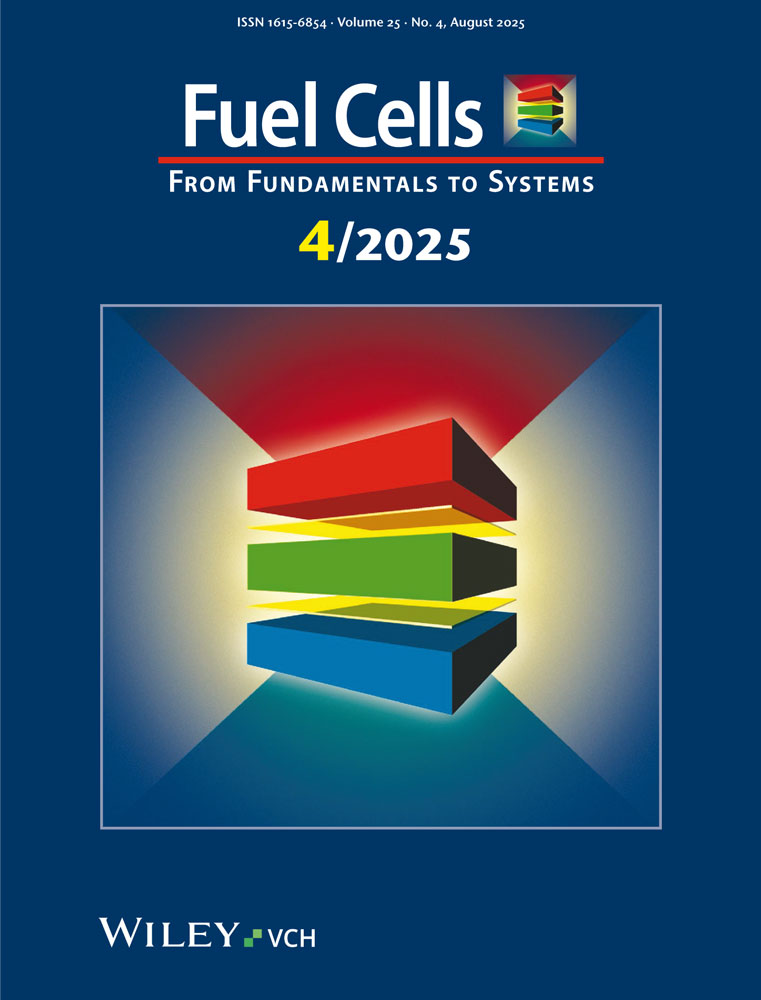Comparison between Nafion® and a Nafion® Zirconium Phosphate Nano-Composite in Fuel Cell Applications
Abstract
A comparative investigation of the electrical, mechanical, and chemical behaviour of zirconium phosphate-Nafion® composite membranes and Nafion® by means of ex-situ measurements, as well as with fuel cell operation, reveals a slight reduction of ionic conductivity, a significant improvement of mechanical stability, and increased water retention for the composite materials. The overall efficiency at 130 °C is increased during direct methanol fuel cell (DMFC) operation because the reduction in the ionic conductivity is overcompensated for by the decrease in methanol crossover. With H2 as the fuel, the slight reduction in overall efficiency corresponds to the decrease in ionic conductivity. The dimensional stability of the membrane and the membrane electrode assembly (MEA) is significantly improved for operating temperatures above 100 °C. A model for the microstructure-property relation for PFSA-Zr(HPO4)2 · n H2O composite membranes is presented, based on the experimental results from membranes with varying filler contents and distributions, obtained through different synthesis routes. It is aimed at the improvement of water distribution in the membrane upon fuel cell operation.




